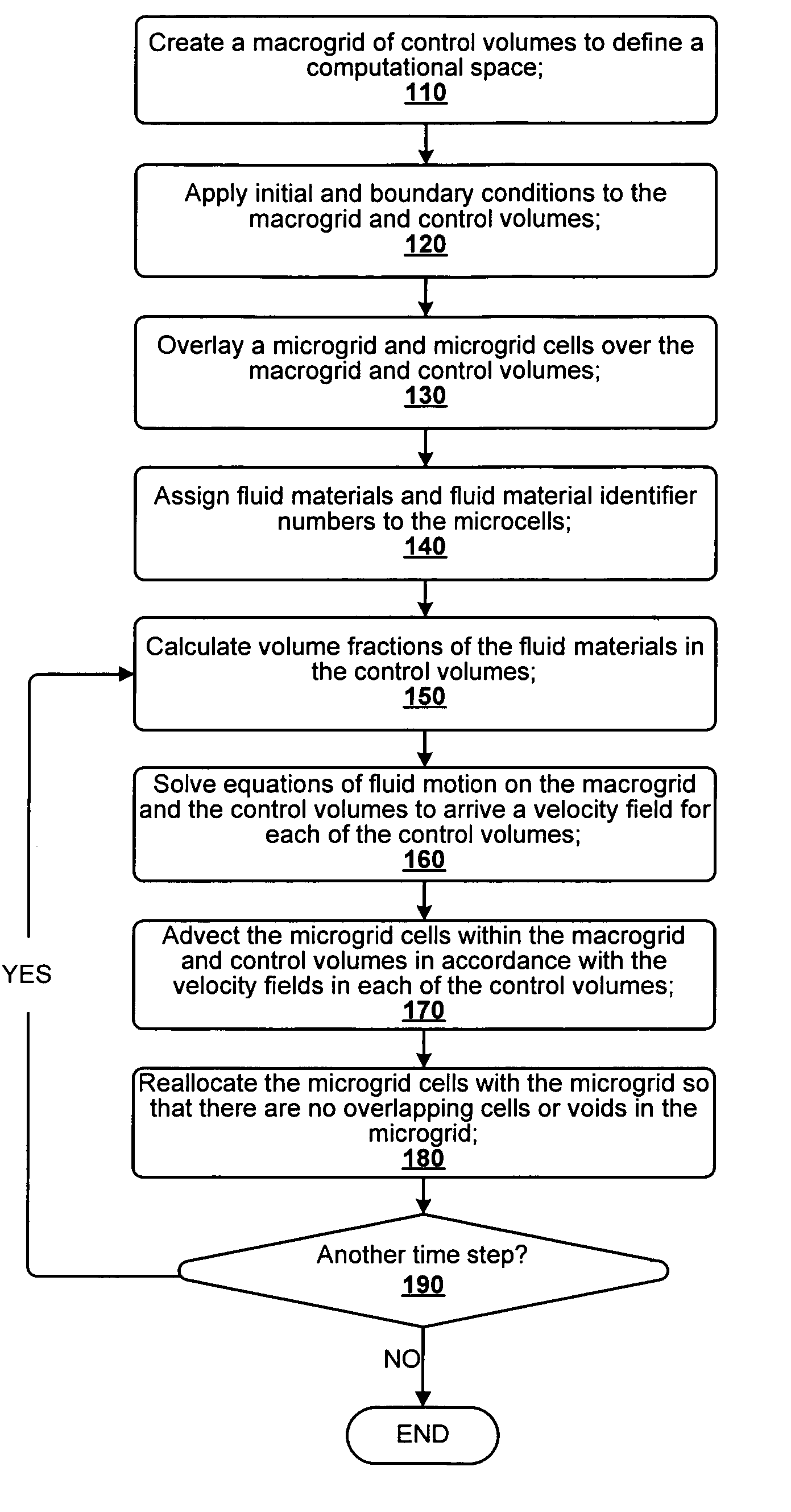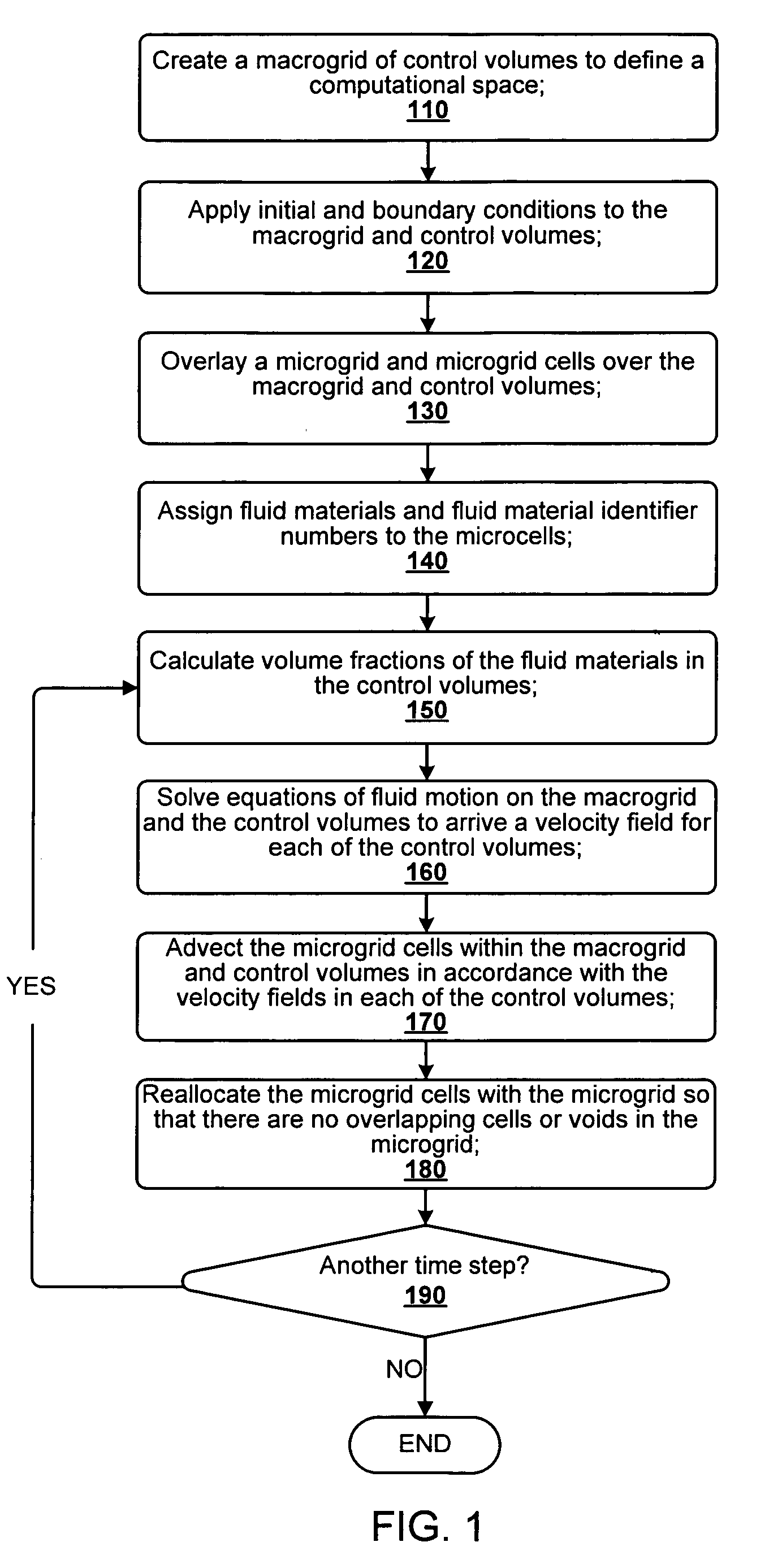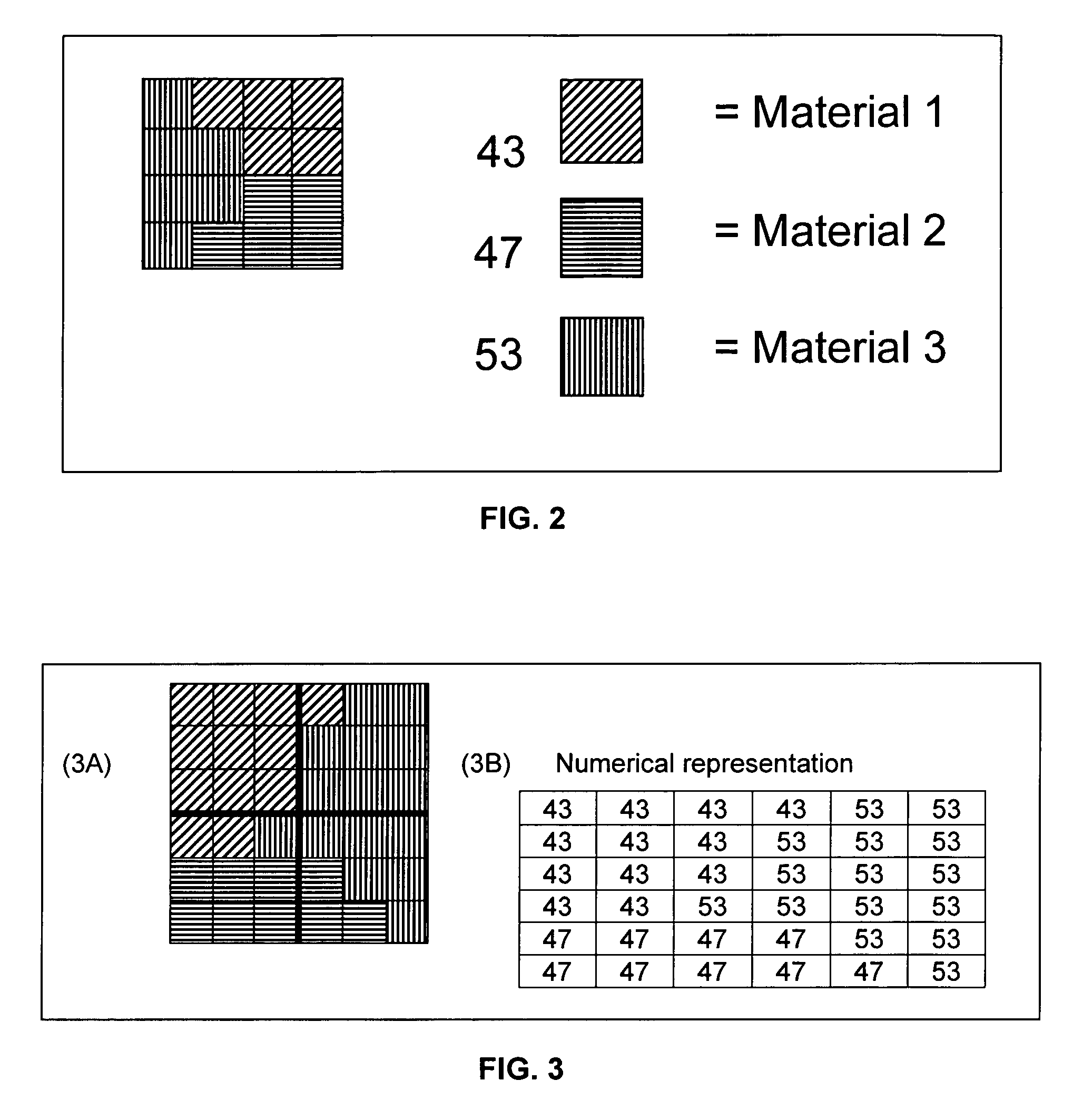N-phase interface tracking method utilizing unique enumeration of microgrid cells
a microgrid cell and unique enumeration technology, applied in the field of multiphase fluid flow simulation methods, can solve the problems of limited methods, no generalized method presently developed that allows numerical simulation of the dynamic movement of three or more fluid materials, and no one to date has addressed the issue of uniquely identifying and tracking. , to achieve the effect of simulating fluid flow and facilitating two or mor
- Summary
- Abstract
- Description
- Claims
- Application Information
AI Technical Summary
Benefits of technology
Problems solved by technology
Method used
Image
Examples
computational example 1
[0077]Circulating rectangular cavity flow offers a rigorously investigated, complicated flow pattern for the reader's review. In this example, the cavity is initialized with a stratified pattern of three similar materials, differing only in prime designation not material properties. In this manner the similarity of the flow form is qualified by literature comparison to a single fluid flow, as well as to illustrate the use of three numerically distinct materials in the microgrid algorithm.
[0078]Rhee et. al. (1984) and Freitas (1986) describe a similar recirculating cavity flow such that given the schematic of FIG. 8, a plate drives a continuous shear motion from front to back at the top of the cavity. FIG. 8 also illustrates the formation of secondary eddies in three of the four corners of the cavity along a center plane. FIG. 9 is a photograph of Rhee's experimental flow along a similar plane for comparison. FIG. 10 is a rendering of the microgrid algorithm output for the three stra...
example 2
[0081]As an example, this same simulation is offered with 126×126 computational mesh and a microgrid cell mesh of 2×2 (¼ of the microgrid resolution shown in the above simulation of FIG. 10) in a side by side comparison at time step=210. This time step is chosen because it shows adequate detail of all the eddy features.
[0082]Because the algorithm employs an additive and collective response measure to the effect of velocity over multiple time steps, the more coarse the microgrid cell refinement is, the less immediate physical response one can see in areas of relatively low velocity. Similarly, because of the block-like movement of microgrid cells, to capture areas of high thinning, microgrid cell size must be reduced. This is most evident in the middle layer, where material should form thin trails in response to the shear motion of the primary circulation cell. Also, while the overall response of the system at coarse micromesh is good, it may be noted that interfacial smoothness and ...
example 3
[0084]The results shown in FIG. 12 utilize a 126×126 computational mesh with an 8×8 microgrid mesh. FIG. 13 is an artistic rendering of the 6 materials in the same view at time step=120.
PUM
 Login to View More
Login to View More Abstract
Description
Claims
Application Information
 Login to View More
Login to View More - R&D
- Intellectual Property
- Life Sciences
- Materials
- Tech Scout
- Unparalleled Data Quality
- Higher Quality Content
- 60% Fewer Hallucinations
Browse by: Latest US Patents, China's latest patents, Technical Efficacy Thesaurus, Application Domain, Technology Topic, Popular Technical Reports.
© 2025 PatSnap. All rights reserved.Legal|Privacy policy|Modern Slavery Act Transparency Statement|Sitemap|About US| Contact US: help@patsnap.com



